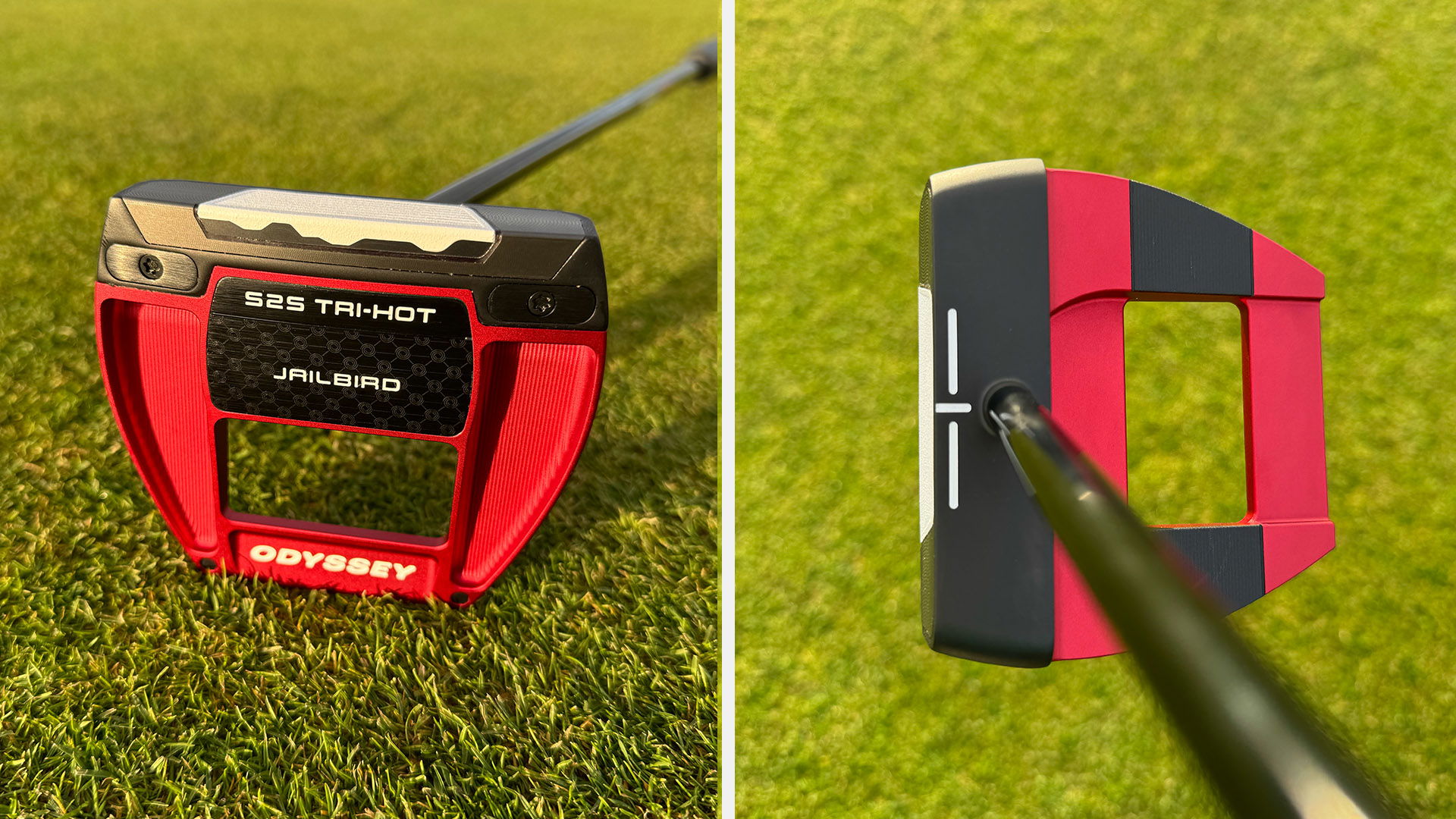New series: We try the latest drivers
Introducing a new column checking out the latest equipment headed your way

Dominic has been revealing what's next in our bags for nearly 20 years, including stints as equipment editor with Golf World and currently Golf International as well as working on Chris Evans' Tee Time TV series on Channel 4. He has also contributed to numerous publications including Pro Shop Europe and Greenside as well as The Times, FHM and the acclaimed 'Eyewitness' series of books. He kicks off with a whirlwind analysis of the latest new-fangled drivers he has already tried and tested. Dominic has been a member at Roehampton Golf Club for over 30 years. | |
Never mind the sluggish Christmas sales, golf equipment is set to buck the New Year consumer slowdown - courtesy of the R&A. Many of us now have the perfect excuse to splash out on one of the latest high-tech drivers in readiness for the new season. After years of confusion and exemptions since the first announcement back in 2002, the rules limiting the 'spring-like' effect on driving clubs finally came into force for all golfers on January 1. While admittedly, most models manufactured over the last few years are already in the conforming, I know many of golfers who have still to replace their non-conforming and now illegal ‘hot-faced’ big stick. And as Golfmagic warned recently, there is still plenty of scope for controversy. Those in doubt should check the lists of non-conforming clubs published by the R&A. All golfers will surely be tempted by some of the latest drivers with exotic geometry and adjustable weighting, as designs take some fascinating twists and turns. | |
CLEVELAND HI-BORE XLS My Christmas came a few days early when I took delivery of a new batch of With its distinctive scooped-back ‘sunken crown’, designed to line up the centre of gravity precisely with the hottest part of the face (unlike many of its more conventional 460cc rivals), the HiBore concept pioneered the trend in whacky shapes long before the ‘square’ became the new fashion. The third-generation XLS model (£249) bites back with a subtly amended profile featuring more angular contouring (which helps with alignment) and a 17% larger face, which I found significantly more forgiving than the shallow-faced original. As always, choose carefully from the various options which, as well as the standard model, now includes a Draw version (with a face closed 3-degrees) and Tour model (2-degrees open). Shaft choice is equally essential, as I found when, in my post-Christmas lethargy, I had difficulty squaring its face with the 60g Fujikura Stiff flex but found I could work the softer, 55g Regular almost at will. WILSON STAFF SPINE v COBRA LV4 Cleveland’s sunken crown (first seen on its excellent Halo hybrid) has clearly been an inspiration for other new ‘low-profile’ rivals, including the | |
The Spine (£229) gets its name from the central ridge which reinforces the face of a club which Padraig Harrington played in the Pro-Am for the Dunhill Links though it's being customized for the Irishman. The “High MOI, Low CG” stamp on the toe of the club encapsulates the techie message from several other new premium drivers this season. And talking of buzzwords, the King Cobra L4V manages a veritable techie ‘Grand Slam’ b y taking all four R&A clubhead variables to their allowable limits - a Moment Of Inertia of 5,900g/cm2, 460cc volume, maximum 5x 5-inch head dimensions and clubface COR of 0.83. I took the L4V for a test drive on New Year’s Day and, despite the delicate condition (me rather than the club), was impressed with the ‘rainbow’ flight (a trendy term for today’s favoured ‘arcing’, rather than ‘climbing’ flight) that was easily achievable without teeing the ball excessively high. This suggests that the weighting has been improved from the early Cobra Speed series from which the L4V has clearly evolved, though now with a rather elegant, longer head featuring pronounced aerodynamic ‘dimples’ in the crown. The resulting low CG presumably explains why I enjoyed hitting a nice high launch despite a lower loft than my usual 10.5 degree spec, and which (together with the 57g Diamana shaft option suited to ballspeeds in the 125-155 mph range), seemed to reduce my excessively high driver spin. I look forward to some number-crunching on the TrackMan on my next visit to expert custom fitters, Precision Golf, in my eternal quest to lock-in my ideal launch conditions. | |
I can’t leave driver geometry without noting that square heads have long outlasted TaylorMade's original 'give it three months' claim. Sure enough, NIKE SQ SUMO2 The Nike SQ Sumo2 5900 is even named after the I managed to stay mostly on the straight and narrow with the club at Nike’s product launch last autumn, with the sound clearly improved (deeper rather than high pitched) - though probably still loud enough to bother KJ Choi’s playing partners! Incidentally, Nike's No1 staff player Tiger Woods, says the only reason he hasn’t ‘gone square’ is because the club is so straight he can’t shape it around doglegs. That’s good enough for me – or at least it was until the R&A’s technical guru, Dr. Steve Otto, explained that the accuracy benefits of high-MOI clubs comes with a health warning. “As long as you square the clubface at impact," Otto told me when we spoke at the R&A's test centre, "a golf ball struck with a high MOI club will go much straighter along the target line as there will be less sidespin. "But if the face is either open or closed at impact you will still go left or right. In which case, a high MOI club won’t improve your dispersion – in fact it might take you further into the rough!” he added soberingly. | |
YONEX NANOSPEED-i Trumping the square heads is the pentagonal shaped Aerodynamics is the name of the game here, with the intricate rear sole section claiming to reduce the wind resistance associated with conventional deep-faced designs. Yonex scientists argue that improving the airflow around the structure leads to both faster head speeds and a more stable flight. I'm still waiting for a sample to try but a fellow equipment tester assures me he gets a Trackman-confirmed three mph extra ballspeed (that’s about six yards more carry). And apparently the sound of the graphite/titanium mix is more aesthetically pleasing than earsplitting all-titanium ballistics. BEST OF THE REST Other elaborate new driver designs for 2008 include | |
But not all companies are buying into exotic shapes and high fallutin’ science. It's ironic, surely, that Similarly, apart from a slightly deeper face and longer body, the new At least it's enough to convince Angel Cabrera (who won the Singapore Open in November) despite his phenomenal driving with the Ping Rapture at last summer’s US Open. Finally, adjustable weighting remains a powerful trend, with the | |
Taylor Made is also ‘going big’ on its SuperFast shaft technology which combines an ultra-light and longer (46-inch) RE*AX graphite shaft with an ultra-light grip, claiming to generate more clubhead speed for increased distance. And 2008 should be a good year for slicers or at least those who want to oust that destructive curve ball from their game. They should check out the revolutionary Admittedly there are anecdotal reports that the MP-600 is not the longest of new drivers - at the club’s official launch top coach Denis Pugh appeared to hit Mizuno’s the non-adjustable, cheaper (and louder!) MX-560, a few yards further - like Luke Donald, I was impressed when taking what is already 2008’s most talked about new driver for an 18-hole test drive. Adjustment, according to the Rules of Golf, should only be made between rounds but, purely for research purposes, I cheekily tweaked the settings on almost every tee to sample some of the 15 possible flight variations promoting varying degrees of bias from fade to draw. Now, if only the R&A would change that rule!
|



















